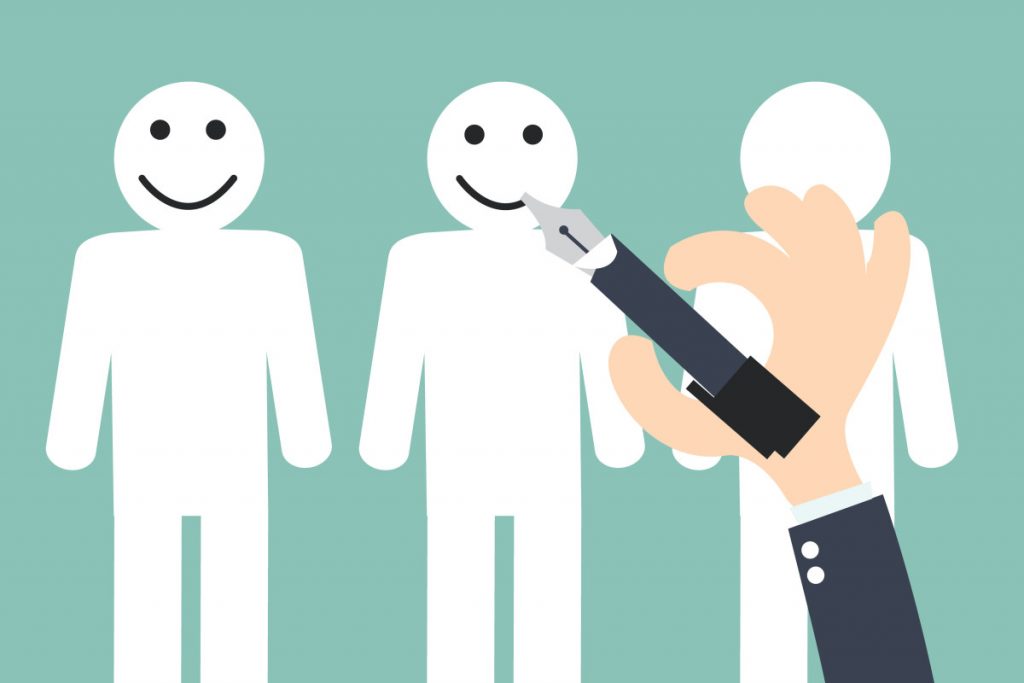Here is three steps you need to keep in mind when working with the customer journey. I know that it can be tricky to get everything in order – but just keep it simple and start small.
I want to tell the story of PAO. PAO stands for Personalization, Automation and Optimization. These three steps will help and guide you to implement or retain your customer journey.
Personalization
The traditional way of communicating with customer is done by standard newsletter (Read my other article: Stop Making Those F*cking Newsletters). Many companies still communicating with customers as a whole mass. It could be a auto-message from an e-mail, when answering the phone or chatting with customers from the website. The problem with these companies is that they don’t use more personalization. And it is so easy to start with!
When doing a sendout many e-mail services like MailChimp already have an option to make the sendout more personalized. If you import a list with information including e-mail and first name – you are already good to go! With MailChimp you can use merge tags and in that way write a message saying
“Hi there *|FNAME|*, hope you are doing great…”
translated
“Hi there Robin, hope you are doing great…”
The feeling of making communication more personalized will increase customer satisfaction – even though they know that the e-mail above is a automated generated from your system. They are not idiots. But they appreciate it!
To get it more personal by answering a phone or a chat there are several systems out there who can get the information from the phone number or from the users data within your system. Intercom is a product who focus on personalization, measuring with tools like big data and chat. With Intercom you can measure what people are doing (and not doing) in your product and by automation send in-app messages or e-mails based on your segmentation and what you want to say to the customer.
Automation
If you have many customers to handle it can be impossible to give them everything they need at the same time. That’s why you need to focus on automation.
Case study
You are a B2B company and selling a online service which have 10 000 customers world wide. The customers need to login to your system in order to use it. You have several events in your product which is based on what your user is doing. You also know that it’s most likely that customers will leave your product within 5 days if you don’t teach them how to use it. You are doing your best with e-mail sendouts, calling customers or measure on the website when people are leaving. This is taking a lot of you and your colleagues time.
With Intercom you can target people who haven’t signed in for 5 days and send them a e-mail (because if they haven’t signed in they won’t read the in-app message). The content of the e-mail can be really simple as:
Hi Peter! Did you know that if you are not using our product you will get a headache
Login here »
Also download this whitepaper ‘3 things you didnt know about our product’.
Let me know if there is anything I can help you with.
By asking them to login in you can measure if they signed in and take action need to keep them signed in. If they still don’t sign in you need to dig deeper and maybe call them or send more pain selling e-mails. This is pure automation with a little of effort.
Optimization
When you have measurable data and you understand when customers are leaving and you are doing everything personalized. You even send happy birthday gifts to customers who have been using your product for 1 month. This is the time to optimize. How can you do things better? If you for 2016 increased your customers engagement by 20% you can easily set goals for how much that number should increase in 2017. You need to see every little aspect you put into your strategy from personalization to automation and than set up a plan in how to make this even better.
One step can be to check all data you have. With all this big data from what customers are doing (or not doing) in your product, you can still write content based on the truth.
“Did you know that customers using the feature more than three times a week will increase their revenue by 20% each month”.
Measure and learn, every day, everything.
Why does a customer leave their supplier?
1% die
3 % move
5% other relationships
9% competitor
14% dissatisfied with the product
68% feel neglected
Source: U.S. Small Business Administration and the U.S. Chamber of Commerce.
